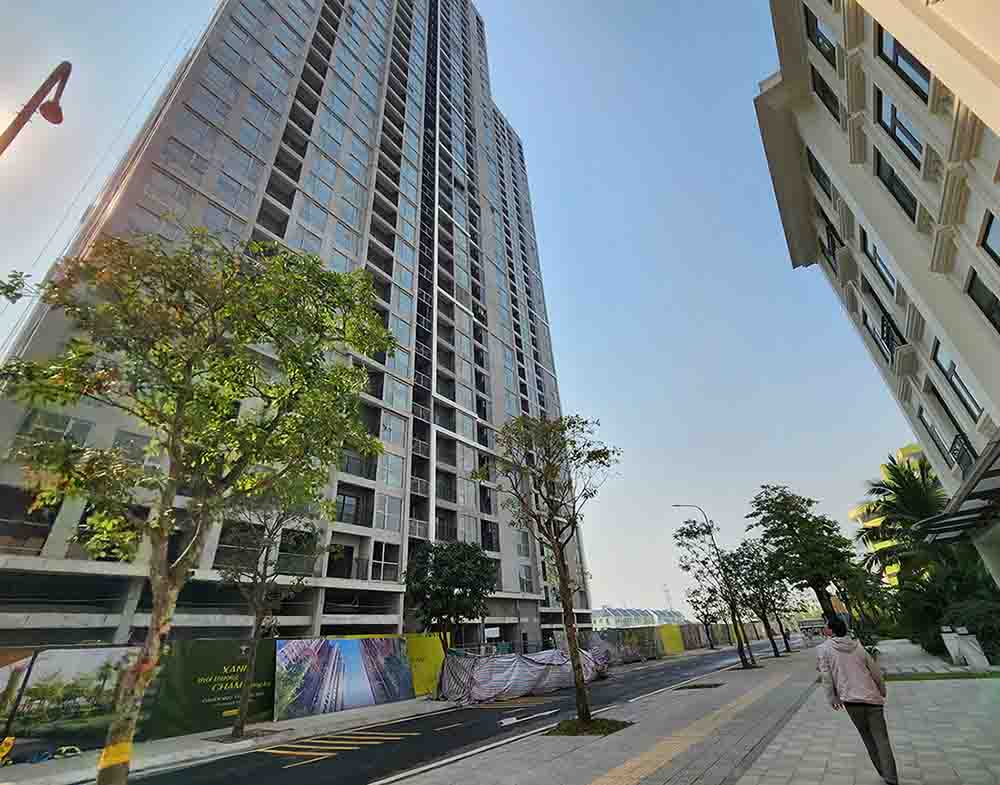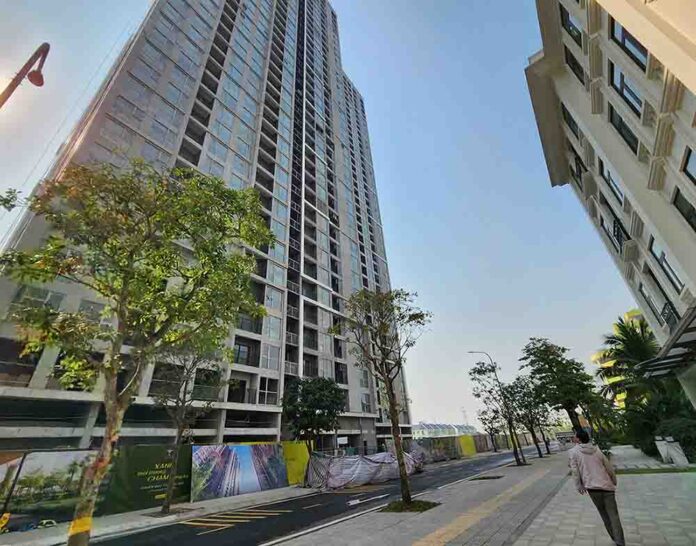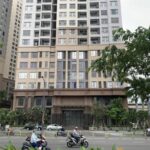In a recent sharing, real estate investment advisor Le Quoc Kien shared that many apartment projects in Ho Chi Minh City, despite being launched several years ago and even completed, are still being offered for sale in the primary market with various incentives but struggle to find buyers. Meanwhile, the secondary market, despite reports of price increases, is witnessing slow transactions.
From mid-2024 to early 2025, many secondary apartment projects in Ho Chi Minh City experienced price increases of 20-30%. This is partly due to new projects or new phases being launched, creating expectations of a rebound in property prices after a period of stagnation. Another factor is the accumulated increase in prices over the past four years (2020-2024), averaging 5-7% annually. Mr. Kien pointed out that the sudden increase in asking prices makes buyers cautious, and they need time to adjust to the new price levels, especially when their income has not kept pace with the rising property prices.
According to Mr. Kien, it is essential to distinguish between actual transaction prices and asking prices. A small number of apartments have experienced price increases and genuine transactions, but many others have only seen increases in asking prices following the trend without an actual boost in sales. For example, an apartment purchased in 2021 for VND 5.6 billion, seeing surrounding projects reaching around VND 100 million/m2, is now listed for sale at VND 8 billion (a 43% increase over four years). However, this is merely an asking price, and even if reduced to VND 7.5 billion, the transaction would still be challenging. Moreover, information about apartments experiencing 20-30% price increases and actual transactions is unclear and may be part of a strategy by “sharks” to push prices and sell their properties.
He further elaborated that the higher the price of a project, the slower the secondary market transactions tend to be, especially for projects with prices exceeding VND 80 million/m2. With such pricing, secondary market transactions are pushed towards the VND 100 million/m2 range. An apartment with an area of 60-70m2 would cost VND 6-7 billion, limiting the number of potential buyers at that price range.

When asked if overpricing compared to the actual value is the main reason for the slow secondary market consumption, Mr. Kien stated that while high selling prices are indeed one of the primary reasons for the sluggish sales of apartment projects, it is not the only factor.
The sharp increase in prices is also attributed to factors such as rising input costs, high compensation costs for land clearance, increasing construction and management expenses, and accumulated interest expenses during the stagnant market period. These factors prevent developers from reducing selling prices as hoped for by genuine homebuyers, especially in areas with high land prices, where it is almost impossible to develop affordable housing segments.
However, besides the selling price, two other factors significantly impact liquidity. Firstly, the timing of the launch plays a crucial role. Many projects were launched during the stagnant market period (2020-2023) when buyers prioritized cash retention, resulting in high inventory levels. As the market started to recover in 2024, these projects, particularly those nearing completion, lost their appeal to investors.
Secondly, the decline in investor demand has shifted the market focus to genuine homebuyers. However, their purchasing power has not kept up with the rising property prices over the years, reducing their ability to afford these properties.
Additionally, some projects are priced higher than their actual value, making buyers feel that the properties are not worth the asking prices.
Analyzing the potential impact of prolonged slow sales on the real estate market, Mr. Kien highlighted three pressures:
First, financial pressure on developers. If the inventory situation persists, interest expenses, management costs, and project maintenance expenses will erode profits. In a worst-case scenario, if inventory levels remain high, interest expenses could even encroach on the principal amount, pushing some developers towards bankruptcy or insolvency. Moreover, with capital tied up in unsold inventory, developers may face challenges in initiating new projects, potentially reducing future supply.
Second, negative impact on the real estate market. To alleviate financial pressure, some developers may be forced to reduce selling prices, offer clearance sales, or provide significant discounts for unsold inventory, especially for units with drawbacks. This could lead to localized price reductions, creating a wait-and-see attitude among buyers and adversely affecting early investors, thereby eroding trust in the market.
Third, ripple effects on the economy. Prolonged real estate inventory can impact banks if developers fail to service their loans, leading to increased non-performing loans and potential repercussions for the financial system and the broader economy. Banks may become more cautious in lending to the real estate sector, reducing capital inflows. Additionally, there could be cascading effects on related industries such as construction, building materials, interior design, and brokerage services.
The Underground Tunnel’s Downpour Disaster: Why Did It Flood?
On May 16, following a heavy downpour, the underpass leading to the new Eastern Bus Station in Ho Chi Minh City experienced severe flooding, sparking concerns among residents. The city’s Transport Authority confirmed that the issue was caused by debris blocking the drainage system, rather than any malfunction in the pumping system.
Unlocking Property Ownership: Clearing the Path for Over 71,000 Homeowners in Ho Chi Minh City
After 6 months of operation, the Task Force has successfully addressed issues and facilitated the certification process for 97 out of 142 projects. This has resulted in the delivery of 71,418 residential units, including apartments, houses, land lots, officetels, and shops, as well as over 888 other real estate products, to the Ho Chi Minh City market.
The Empress of the South: A Majestic Debut with “The Proud Waltz”
With a dazzling debut, The Gali, the “Queen” of luxury living, graces the southern district of Ho Chi Minh City with her presence. The kick-off event, themed “The Proud Dance,” showcased the project’s elegant essence and marked a memorable first impression.
Crafting Vietnam’s Global Financial Destiny: The Significance of a Dual-Hub Paradigm
Vietnam’s dynamic financial landscape is evolving, and a multi-hub system is the key to unlocking its potential. We propose a visionary strategy to establish Da Nang as an innovative testbed and a green finance powerhouse, working in harmony with Ho Chi Minh City’s established financial prowess. This strategic move will create a robust and sustainable financial ecosystem, harnessing the strengths of both cities.





















